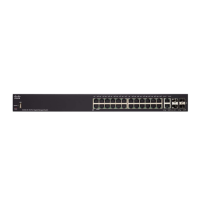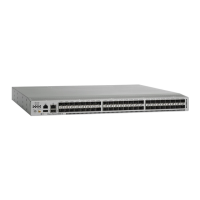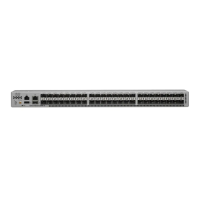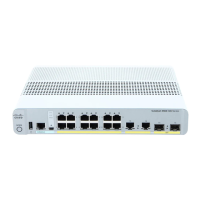IP Configuration: RIPv2
Configuring RIP
Cisco 350, 350X and 550X Series Managed Switches, Firmware Release 2.4, ver 0.4 342
18
• Transparent—Causes RIP to use the routing table metric as the RIP metric for the
propagated static route configuration. This results in the following behavior:
- If the metric value of a static route is equal to or less than 15, this value is used in
the RIP protocol when advertising this static route.
- If the metric value of a static route is greater than 15, the static route is not advertised
to other routers using RIP.
• User Defined Metric—Enter the value of the metric.
STEP 7 Click Apply. The settings are written to the Running Configuration file.
RIPv2 Settings
To configure RIP on an IP interface:
STEP 1 Click IP Configuration > RIPv2 > RIPv2 Settings.
STEP 2 RIP parameters are displayed per IP interface. To add a new IP interface, click Add and enter
the following fields:
• IP Address—Select an IP interface defined on the Layer 2 interface.
• Shutdown—Keep RIP configuration on the interface, but set the interface to inactive.
• Passive—Specifies whether sending RIP route update messages is allowed on the
specified IP interface. If this field is not enabled, RIP updates are not sent (passive).
• Offset—Specifies the metric number of the specified IP interface. This reflects the
additional cost of using this interface, based on the speed of the interface.
• Default Route Advertisement—This option is defined globally in the RIPv2
Properties page. You can use the global definition or define this field for the specific
interface. The following options are available:
- Global—Use the global settings defined in the RIPv2 Properties. screen.
- Enable—Advertise the default route on this RIP interface.
- Disable—On this RIP interface, do not advertise the default route.
• Default Route Advertisement Metric—Enter the metric for the default route for this
interface.

